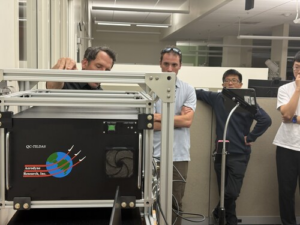
‘Productivity’ is often heralded as the engine driving rising wages, faster economic growth, and improved living standards. Yet, for many Australian workers, it can sound like a euphemism for longer hours and increased workloads. This week, the Australian government convenes a panel of experts and advocates to brainstorm strategies to rejuvenate the nation’s flagging productivity.
While our invitation may have been misplaced, we’ve compiled a selection of bold, surprising, and thought-provoking ideas. From streamlining regulatory processes to embracing AI and improving mental health, these initiatives aim to boost productivity across various sectors.
Streamlining Regulations for Businesses
Michael Brennan, chief executive of the e61 Institute, emphasizes the need to cut through the red tape that hampers business efficiency. “If a business spends an hour a week on compliance, that’s manageable. But when it stretches to 15 or 25 hours, it significantly detracts from productive work,” he explains.
Brennan advocates for a cultural shift among regulators, who he believes have become overly risk-averse. “Regulators are criticized for being too lax, never for being too strict. We need to balance this to not stifle economic activity,” he argues.
“There are not a lot of obviously palpably dumb regulations. Every regulation has a purpose and some motive; the problem is, we tend to ignore the cumulative impact. And there is a cost.” — Michael Brennan
Streamlining regulations, especially in AI and housing, could accelerate project timelines and alleviate Australia’s housing crisis. Brennan suggests a ‘one-stop shop’ approach for regulatory approvals, involving both state and federal governments.
Harnessing AI for Economic Growth
AI is often touted as a revolutionary force for productivity. However, Dr. Jon Whittle, director of Data61 at CSIRO, cautions that its impact is still uncertain. “AI is a general-purpose technology in its infancy, and its productivity benefits are not yet clear,” he notes.
“We found that for the most part, people were just using it to write emails or summarise minutes of meetings, but they weren’t really getting step change improvements out of that.” — Dr. Jon Whittle
While the Productivity Commission estimates a 4.3% boost in labor productivity from AI over the next decade, Whittle stresses the importance of proper implementation. “AI can solve major societal challenges if introduced in a way that considers human factors,” he says.
Investing in Mental Health for Economic Gains
Georgie Harman, CEO of Beyond Blue, highlights the economic toll of mental health issues, costing the economy $70 billion annually. “Investing in mentally healthy workplaces can yield significant economic returns,” she asserts.
“For every dollar invested in effective work placement health interventions, there’s at least a $2.30 return to a business.” — Georgie Harman
Harman advocates for a comprehensive mental health strategy, involving both state and federal governments, to create healthier workplaces and boost productivity.
Rethinking Corporate Taxes and Investment
Professor Robert Breunig from ANU suggests reshaping corporate taxes to encourage investment. The Productivity Commission proposes cutting the corporate tax rate from 30% to 20% for most companies, while introducing a 5% tax on net cashflow.
“Our current settings probably discourage investment and risk-taking, which you need for productivity.” — Professor Robert Breunig
Breunig argues that this tax reform could make Australia more attractive for local and foreign investment, driving productivity growth.
Exploring Additional Productivity Boosters
Other innovative ideas include adopting a four-day workweek, incentivizing research and development through levies on large businesses, and improving indoor air quality to enhance workplace productivity.
Dr. Rowena Ditzell from the University of Sydney promotes a four-day workweek, which could boost productivity by focusing on outcomes rather than hours worked. Meanwhile, Anna-Maria Arabia from the Australian Academy of Science suggests levies on companies not investing in R&D to spur innovation.
Professor Lidia Morawska from QUT recommends improving indoor air quality in workplaces to reduce absenteeism and enhance focus, highlighting the pandemic’s lessons on air quality’s impact on health and productivity.
Conclusion: A Multifaceted Approach to Productivity
These diverse ideas underscore the complexity of enhancing productivity in a modern economy. From regulatory reform to mental health investments and tax incentives, each proposal offers a unique angle on boosting Australia’s economic performance. As the government deliberates on these strategies, the challenge will be to implement them effectively, balancing innovation with practical considerations and societal needs.
As Australia navigates these productivity challenges, the focus will remain on creating a more dynamic, resilient, and inclusive economy for the future.







